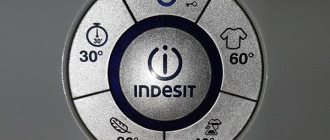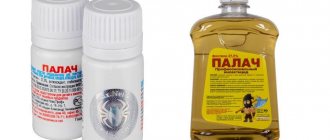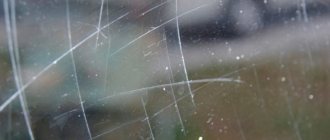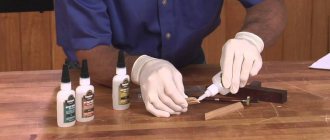In order to answer the questions as comprehensively as possible: how to polish plexiglass at home, how to polish plexiglass and how to polish plexiglass with your own hands , it is necessary to consider in detail what plexiglass essentially is and what its properties are. Plexiglas (acrylic plastic) is not inferior to classical glass in its performance, and in some nuances it surpasses it. Its use in many industries allows it to be purchased in almost any shape. Acrylic glass (block plexiglass) is used in ophthalmic interventions, advertising, trade, scientific, technical and household spheres.
Plexiglas does not refract the image, has high strength and heat resistance. So the softening temperature is 95-105 degrees. And the permissible temperature of use is 80 degrees. However, despite the good resistance to damage, with prolonged and active use, it becomes necessary to polish the plexiglass from scratches. Many consumers sooner or later wonder whether plexiglass can be polished. Below we will look in detail at how to polish plexiglass from scratches and how to polish plexiglass with your own hands. We also suggest that you read the article: how to cut plexiglass at home.
When polishing plexiglass from scratches with your own hands at home, you need to consider that:
- The impact of aggressive techniques is not acceptable;
- Many chemicals can reduce the aesthetics of appearance and performance characteristics of the material.
Processing plexiglass involves the use of available techniques and means that are not complicated or expensive.
How to sand plexiglass at home
Many people ask the question: how is plexiglass polished at home? This procedure is often extremely necessary, because many home craftsmen try to create various parts from this unique material with their own hands. Grinding can be done at home, without using any specialized equipment. You can make do with what you have on hand.
There are several ways by which you can polish the ends of a plexiglass product or the front surface to the desired shine. Depending on the method you choose to sand and polish your acrylic will determine what tools and memory aids you will need. It is also worth noting that the conditions in which the work will be performed are important, and the dimensions of the product are also important.
Features of the material and scope of application
Organic glass is produced from acrylic acid through various chemical reactions. This material is similar in various parameters to ordinary glass, but its nature is organic (hence the name of the material). There are several synonymous words - plexiglass, acryplast, carboglass, etc.
Among the main characteristics of plexiglass we can highlight:
- ease;
- softness;
- ability to easily transform;
- flexibility during processing;
- high throughput;
- When exposed to certain chemicals, plexiglass decomposes.
The impact resistance of many types of plexiglass is 5 times greater than that of ordinary glass
Polymer transparent material is used in various areas of human activity, so the use of organic glass can lead to a change in its appearance - deterioration of transparency, reduced gloss, the appearance of scratches, roughness and other unfavorable aspects. When severely damaged, carbon glass turns from glass into ordinary plastic. In this regard, the question often arises about the need to polish plexiglass at home.
How to clean cloudy glass
Before the procedures, it is advisable to remove the plexiglass part to simplify the work. To return the material to its former presentable appearance, the surface must be polished using special means. Let's look at how to restore the transparency of plexiglass.
To clean a cloudy surface, use GOI paste and a felt cloth. Apply a thin layer of product to the felt and polish the product using circular movements. Gradually and sequentially process small areas of glass until you achieve the desired transparency. After polishing, rinse off the paste and wipe the surface dry.
If the plexiglass has turned yellow, laundry soap or dishwashing detergent will help to bleach the material. They will remove a light coating. Severely yellowed surfaces can be cleaned with a vinegar solution of 70-80%, hydrogen peroxide 30%, chlorine and chlorine-containing bleaches.
But the listed products are quite aggressive compounds, so work carefully. In addition, you can use special cleaning sprays for plastic. How to bleach yellowed plastic, see in more detail here.
Recommendations
The following recommendations should be followed:
- any work with plexiglass should be carried out with minimal pressure so as not to break the product;
- before starting work, the glass should be washed with water and dried without using heating devices; It would be ideal to be able to detach the organic glass from other surfaces, but if this is not possible, then seal them with tape;
- When processing with sandpaper, it is recommended to periodically moisten the glass surface with plain water;
- when felt is missing, it can be replaced with a regular felt insole;
- a polishing wheel will make the polishing job much easier, and grinding machines are also an excellent choice; but when using the technique, you should remember that the rotation speed should not be at maximum - this will help avoid damage to the glass surface;
- after using car cosmetics, the glass can be wiped with vegetable oil;
- Do not forget about the protection of the master - use safety glasses when polishing and grinding;
- when using chemicals, it will be necessary to ventilate the room well; if even mild dizziness occurs, you should immediately stop working and go out into fresh air;
- the use of fire must be very careful;
- a respirator will help protect your respiratory organs from dust, but if you don’t have one, you can try replacing it with a medical mask or scarf;
- gloves will help protect the skin of your hands from dust and other small powders that can get on the skin and cause allergies;
- When grinding glass with deep scratches, you should start with coarse-grain paper, and as the top layer wears off, replace it with a finer one; after this, the surface will become matte, but if the difference is visible, then the less transparent areas of the glass should be additionally sanded until the same result is obtained;
- the grinding process should periodically be replaced by the process of cleaning the resulting dust;
- GOI paste should not contain ammonia, since it can make the glass dull;
- when polishing using technology, you need to know that thermoplastics require up to 1.5 thousand revolutions per minute, and thermosetting compounds - up to 2 thousand; thermoplastic glass compositions should be treated with softer polishing components compared to thermosetting ones;
- It is better to treat corrugated organic glass with chemical steam, since grinding and further polishing will not bring results;
- Steam polishing is not suitable for transparent glass, unless the goal is to make it matte;
- using GOI paste with aluminum in its composition will give color to transparent glass, and chromium oxide will penetrate into the damaged surface and most likely will remain there; it will be very difficult to remove it;
- chemical matting or sanding with fine-grained paper is suitable for obtaining a matte surface.
It is always possible to polish the glass at a car service; for some, it will even be much easier to simply replace it. But this method will require more extensive financial costs. In the case of your favorite things, it will be inappropriate to talk about replacement, so choose a method that is more convenient for you and restore your dear things yourself. The proposed methods of influence will help you achieve good results.
You can get acquainted with the technology of polishing plexiglass in the following video.
The glass on the watch is broken or cracked: folk signs
Signs have long been an explanation for incomprehensible events in the life of every nation. Man saw in them his destiny, purpose, and looked for hidden meaning. Nowadays, belief in omens does not lose its relevance. People continue to be guided by them in planning affairs, assessing the impact of signs on the future.
cracked glass
The clock is directly related to time, the flow of life
Many esotericists believe that watches are capable of absorbing the energy of their wearer, because of this it is not recommended to give watches to strangers or pick them up on the street, which is why the sign of broken glass on a watch is so important for most
Cracked glass at different times foreshadowed different adversities:
- possible imminent illness of the owner, and the larger the crack, the longer and more severe the illness will be;
- collapse and failure in business or personal life is a hint of a waste of time;
- breaking the glass on the watch while removing it from your hand is a warning about danger to relatives, the possible loss of a loved one.
Broken walkers should be dealt with as follows:
if it is possible to repair them, then do not delay the repair - take it to a specialist; if repair is impossible, then it is important to get rid of the damaged product as quickly as possible - wrap it in purple fabric (it is believed that this color absorbs all negative energy) and take the watch to a place where no one will find it; if the item is very expensive, then by wrapping them in fabric, you can hide them in a box or casket at home. Often a person associates his failures with omens, so try to attune yourself to those superstitions that predict good luck or happy events
Often a person associates his failures with signs, so try to attune yourself to those superstitions that predict good luck or happy events.
signs of broken glass on a watch
Remember that everyone chooses for themselves what to believe in!
Author of the article: Alexander Moskalets
25.12.19
Using GOI paste, sandpaper and felt (with detailed video)
Plexiglas polishing paste is most often used for this type of work. Even professional restoration specialists use this method. To achieve maximum results, you need to use a certain algorithm:
- The first step is to limit the work surface using masking tape. If it is possible to separate the acrylic part, then it is better to do just that.
- Sand the surface with sandpaper (grain 2000), periodically moisten it with cold water. The result of this stage should be a uniform matte surface. Don't rush into work, do everything measuredly.
- Polishing plexiglass with your own hands, although it does not require much effort, is a rather lengthy process. At the third stage, you need to dry the acrylic element, take felt and apply GOI paste. Then get to work. It is recommended to divide the surface into small sections and rub them until they have a glossy shine.
What is needed?
So, how to polish plexiglass and what is required for this? Many people ask a similar question. Processing the material is a simple process. The result after manual polishing is much better than after using special equipment that can heat the material and melt its surface. Before starting processing, you should prepare all the necessary materials and tools. For this you will need:
- A sharp scalpel or knife blade.
- Soft sponge or cloth.
- Sandpaper marked 2000 and 800.
- Polishing paste.
- Paper.
- Paper-based masking tape.
Polishes
The success of the entire enterprise largely depends on the correct choice of polishing paste. The paste must match the brand of plexiglass, and reviews on the use of polish for surface treatment vary greatly. Therefore, we recommend using proven products, in particular, GOI paste. GOI paste got its name in honor of the State Optical Institute, where it was developed in the 30s of the last century for polishing optical glasses, known for their highest requirements. Of course, GOI also has a number of disadvantages, for example, it contains chromium oxide, which should also not be forgotten when working.
For our needs, medium-grain GOI is suitable, which can be recognized by its green color.
In fact, many modern products can cope with surface rubbing; you just need to carefully read the instructions. So, polishing paste for plexiglass should not contain ammonia, which gives the surface a porosity that is incompatible with transparency. Excessive graining also harms the surface.
To polish polymer glass, you can even use tooth powder, which is applied with a cloth.
Polishing methods
If you have sufficient skill, you can use a grinder, both special and improvised, for which you can adapt an electric drill, equipping it with a special attachment. In this case, there is no need to use high speeds to avoid overheating of the surface. Overheating can result in surface microcracks that negatively affect transparency. What to do if all the above attempts did not bring the desired result? In this case, experts advise painting the surface or using colored film.
Disadvantages of a self-performed procedure
Polishing plexiglass with your own hands has a number of disadvantages. As a rule, independent work takes a lot of time and requires a lot of effort, especially if you need to process a large area. It is difficult to achieve a perfectly smooth surface without a single defect.
Microscratches and small cracks become invisible and it is no longer possible to eliminate them. If you need to remove a single defect, the difficulty of the procedure is that it is almost impossible to leave the surface around the scratch intact.
When polishing yourself, micro-scratches may remain on the plexiglass.
Methods for polishing plexiglass at home
You can give plexiglass products their original appearance without resorting to complex tools or expensive materials.
There are several effective methods of dealing with the “non-commercial” type of plexiglass:
- Felt + GOI paste.
- Use of dichloroethane.
- Using polishes.
- Homemade recipes (wine vinegar, toothpaste, etc.)
Using GOI paste, sandpaper and felt (with detailed video)
This method is the most common and has proven itself to be the best among craftsmen restoring plexiglass surfaces.
You should know that there are coarse, medium and fine types of GOI paste
- Isolation of plexiglass from other structures and elements. If possible, separate the plexiglass from other structures (seal adjacent areas with tape, disconnect the plexiglass parts, etc.)
- Using sandpaper with a grain of 2000, process the organic glass, periodically wetting the surface with water (under running water or using a spray bottle). Uniformity and slowness are the main characteristics when performing this work. A matte, uniform surface should be the result of this labor-intensive step.
- The part, wiped dry, is polished using felt with GOI paste applied to it. This should be done slowly, achieving the highest quality result.
This method of restoring plexiglass is suitable for plexiglass if there are large scratches on it.
By following the step-by-step instructions in the video, you can easily cope with the task of eliminating plexiglass defects.
Home helpers (toothpaste, chalk and others) + video
Some craftsmen use chalk or toothpaste as a polishing agent, applying these substances to felt or other soft fabric. How to polish - manually or using technology - is decided by each specialist independently. The main thing is to obtain a result in the form of a smooth and shiny surface.
You can use regular towels made from natural materials. Apply a little toothpaste to them and rub it in a circle into the surface to be treated. After this, rinse the plexiglass with plain water.
Surface technologies
Today, specialists use several methods of polishing plexiglass, each of which is effective and suitable for repairing all types of defects.
Car polishes
Car cosmetics are one of the simplest methods for restoring plexiglass, which copes well with shallow scratches and other minor defects. To restore using this method, you need to purchase car polish and a soft cloth. Sometimes the grout material comes complete with polish. You can also use a grinder, equipping it with a special attachment. If you plan to polish carbon glass, the Compound brand of polish is suitable:
- Before starting to process the entire surface, you need to test the polishing agent on a small area - this will avoid consequences.
- Next, you need to apply a little polish to the surface of the glass and rub it into the glass.
- If a sander is used, it is necessary to monitor the speed, keeping it low to avoid burning the surface being polished.
Pastes
The method in which the paste plays a key role involves the use of GOI paste, a special substance used for polishing high-strength materials. To work with this technology, you will need fabric as a grouting material. A felt or felt rag will do. You can also use cotton wool pads sold in cosmetic stores. For post-processing, fine-grit sandpaper is used. This method is optimal for restoring glass that has served for a very long time:
- You need to apply the paste to the surface of the glass panel.
- The substance is rubbed into the glass using the selected grouting material.
- The polished surface is treated with sandpaper moistened with water. The glass also needs to be kept damp.
- The glass is wiped with a piece of soft cloth and again treated with GOI paste. This time felt is used for grouting.
Felt is excellent for polishing plexiglass due to the peculiarity of its structure
Felt and sandpaper
Grouting with sandpaper will allow you to eliminate minor imperfections on the plexiglass surface in a short time, without putting much effort. Polishing using this method also involves the use of paste, but in this case you can purchase any substance at a hardware store. In addition, you will need two types of sandpaper - 800 and 200 grit, as well as felt or soft cloth:
- The glass is carefully and evenly rubbed with 800-grit sandpaper, constantly moistened with water until the surface is completely matte and without visible damage.
- The surface is wiped with a soft cloth and sanded with 2000 grit sandpaper. The panel should become completely transparent and have no defects.
- Using a clean cloth, apply polishing paste and distribute it evenly throughout the glass. After a few seconds the material should become shiny.
Non-standard assistants
Paste is an optional component. There are many “folk” recipes for polishing organic glass, which have varying degrees of effectiveness. Sometimes craftsmen use regular toothpaste or chalk instead of polishing paste. Both of these substances provide a shiny, smooth surface and are applied with a soft cloth. Instead of fabric, you can use a towel made of natural material:
- The selected polishing material is applied to a towel and rubbed in in a circular motion until the desired surface condition is obtained.
- After polishing, the glass is washed with plain water.
If you don’t have plexiglass polish on hand, you can replace it with toothpaste
When is polishing needed?
The need for polishing may arise in two cases: after long use or processing. Cutting often leaves tools with rough edges, chips and small cracks. In order not to harm the appearance of the panel, you need to perform polishing work. Then you will be able to avoid the problem of tarnishing and distortion of the glass surface.
Advice! You can stick a colored film on the product. This will add aesthetic appearance and strength to it.
Preparation
Plastic is a lightweight and cheap material that is easy to use, does not require special care, and is resistant to temperature fluctuations. Such properties have become the basis for the fact that plastic products have become in demand, as well as an indispensable attribute of modern life - plastic products are used in all industrial areas:
- automotive industry;
- production of household appliances;
- production of kitchen utensils;
- production of household items;
- furniture;
- construction – finishing materials and others;
How to polish plexiglass
Organic glass is a thermoplastic material known for its impeccable quality.
It has a high level of transparency and is significantly superior to ordinary glass; it freely transmits light rays without any distortion, clouding or other defects. Plexiglas is widely used in the production of all kinds of display cases, partitions, special viewing windows, accessories for cars, telescopes, lamps, microscopes, and medicine, construction, industry and many other industries cannot do without it. However, with all its advantages, in order for it to last for quite a long time, it requires conscientious care. Next, we’ll look at how to polish plexiglass, but we also recommend that you familiarize yourself with the material for gluing plexiglass.
What you need to know about polishing plexiglass? No matter how durable and reliable the material plexiglass is, it will still show minor cracks and minor scratches and cuts. This occurs due to mechanical stress during its operation. Although polishing plexiglass at home is not an extremely difficult process, it is a rather lengthy, meticulous and patient task.
The main thing that a polisher should know is that aggressive, strong chemicals and substances cannot be used when polishing. If polishing is carried out using them, the glass may become dull, cloudy and less transparent.
Required tools and materials
Many who have come across this material have wondered how to polish plexiglass themselves, without resorting to the expensive help of a professional.
It is possible to quickly and efficiently polish plexiglass at home without significant costs. Moreover, the result will be significantly better than with machine processing, due to the rapid heating and melting of the surface. To do this you will need the following materials and tools:
- A roll of masking (paper) tape;
- Paper;
- Polishing paste;
- Sandpaper grade 800 and 2000;
- Soft cloth;
- Blade knife or sharp scalpel.
How to polish plexiglass with your own hands?
1. In order for polishing plexiglass at home to proceed conveniently and reliably, it is necessary to remove the glass being processed from the product.
2. First of all, it is necessary to protect the edges of the glass with tape by gluing it from the ends around the perimeter with an overlap of 1 - 2 mm. If for some reason it is impossible to remove the glass from the product, then work this way, but cover all non-glass parts of the product. To ensure that glue does not remain on the glass at the end of the job, use proven high-quality tape. Although we have already described in a previous article how to remove glue from tape. After this, round the corners and remove the remaining tape by cutting them off with a scalpel.
3. When all the above preparatory work has been done, we proceed to polishing. Take 800 grit sandpaper and start sanding the surface of the glass with a little addition of water. This process should be uniform and neat. When sanding is complete, we wipe the surface and see what we have.
Oddly enough, the plexiglass should be completely opaque. There is no need to be afraid of this, this is how it should be. If the glass is not uniformly frosted, continue sanding until you achieve uniformity, and also carefully monitor the absence of potholes on the surface.
4. When you achieve the desired result, take 2000 sandpaper and continue sanding with it. You will notice that the glass begins to become more and more transparent. There should be no scratches or various cracks throughout its entire area. If you find any defects on the glass, then sand again with 800 sandpaper until they disappear, and then again with 2000 sandpaper. Once the desired result is achieved, wipe the surface of the plexiglass.
What is it for?
Plexiglas is considered a strong and reliable material. However, over time, small scratches, chips and cuts appear on it. This happens due to mechanical stress on the product during its use. To return plexiglass to its attractive appearance, it is necessary to polish it.
Please note that the procedure itself is not complicated. But at the same time, this is a meticulous and lengthy task that requires patience and endurance. In addition, strong, aggressive substances should not be used to process plexiglass. As reviews show, after using such products, the material may become dull and cloudy.
General recommendations
First of all, it is necessary to ensure the safety of polishing plexiglass. During processing, attention should be paid to the following points:
- Spraying dichloroethane should be carried out with protected respiratory tracts: you need to wear a medical mask or respirator.
- The room in which work with chemicals is carried out must be constantly ventilated to avoid the concentration of harmful substances in the air.
- Before starting to work with a power tool, you must ensure that it is in good working order, as well as the integrity of the power cable and the electrical network of the work area.
- When working with sandpaper or a sander, you should protect your eyes with goggles, as dust or small fragments may get into them.
- For work, you need to use protective gloves made of durable material to protect the skin of your hands from contact with chemicals and hard fragments. You need to select gloves according to the size so that excess fabric does not get into the tool and interfere with manual work.











